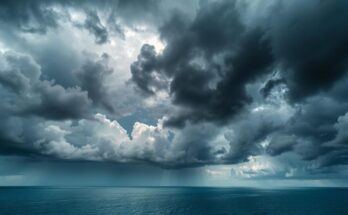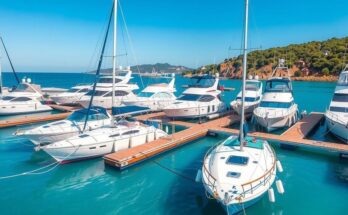The Southern Hemisphere is currently experiencing an active cyclone season, with at least six cyclones monitored by the Joint Typhoon Warning Center. Among them, Cyclones Alfred and Honde pose significant threats to Australia and Madagascar, respectively. Tropical cyclone energy in this region is over 138% above normal. As the cyclone season concludes, the focus will transition to incoming activity in the Northern Hemisphere.
Current tropical cyclone activity is significant in the Southern Hemisphere, with the Joint Typhoon Warning Center monitoring multiple systems, including Alfred, Seru, Rae in the South Pacific, and Honde, Garance, and Bianca in the Indian Ocean. Despite the Northern Hemisphere experiencing winter with no tropical threats, the cyclone season remains active in the Southern Hemisphere. Recent satellite imagery reveals these cyclones ranging from Africa and Madagascar to both coasts of Australia, raising concerns about their potential impacts on landmasses.
Cyclones Honde and Garance are under scrutiny due to their immediate threat to areas such as Madagascar and Mozambique, where heavy rains and strong winds are anticipated. Cyclone Alfred is notably the primary concern for meteorologists in Australia, predicted to strike the coastline imminently. Forecast models suggest that Alfred may bring intense winds and significant rainfall to Queensland, leading to fears of flooding and travel disruptions.
The Southern Hemisphere is witnessing an extraordinary increase in tropical cyclone energy, exceeding 138% above normal levels, as compiled by Colorado State University. This uptick is mainly due to heightened cyclone formations occurring in the South Indian Ocean compared to the Pacific. The cyclone season typically spans from November to April, coinciding with the Southern Hemisphere’s summer and fall months.
Australia has already been affected by several powerful cyclones during the 2024-2025 season, including the Category 5 Tropical Cyclone Zelia, which temporarily disrupted iron ore mining activities along the Pilbara Coast. Although cyclone activity is currently robust, experts anticipate that it marks the end of the major cyclone season as the weather patterns shift. The cooling water temperatures will signal the transition to cyclone activity in the Northern Hemisphere following the equinox.
As the Southern Hemisphere’s cyclone season concludes, tropical cyclone activity will soon shift to the Northern Hemisphere, with the North Indian Ocean and western Pacific expected to initiate the first formations. The eastern Pacific and North Atlantic will likely see their initial tropical systems appear in early meteorological summer.
In conclusion, tropical cyclone activity in the Southern Hemisphere is notably heightened, with multiple systems posing potential threats to land, especially in Australia and nearby regions. Cyclones Honde, Garance, and Alfred are of particular concern, with the possibility of severe weather impacts in the coming weeks. As the season nears its end, the focus will soon shift to the Northern Hemisphere, where cyclone activity is anticipated to begin during the warmer months.
Original Source: www.foxweather.com




